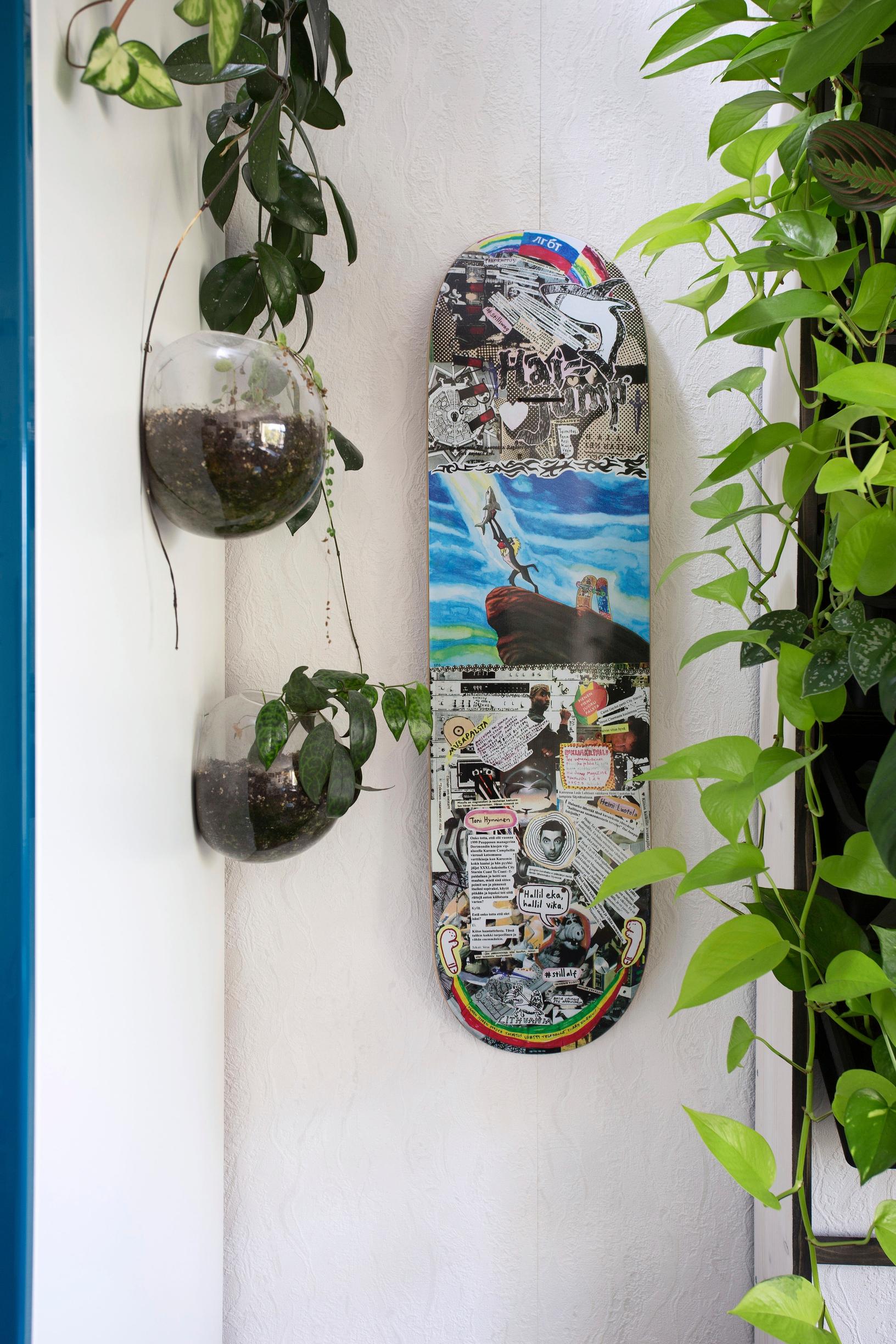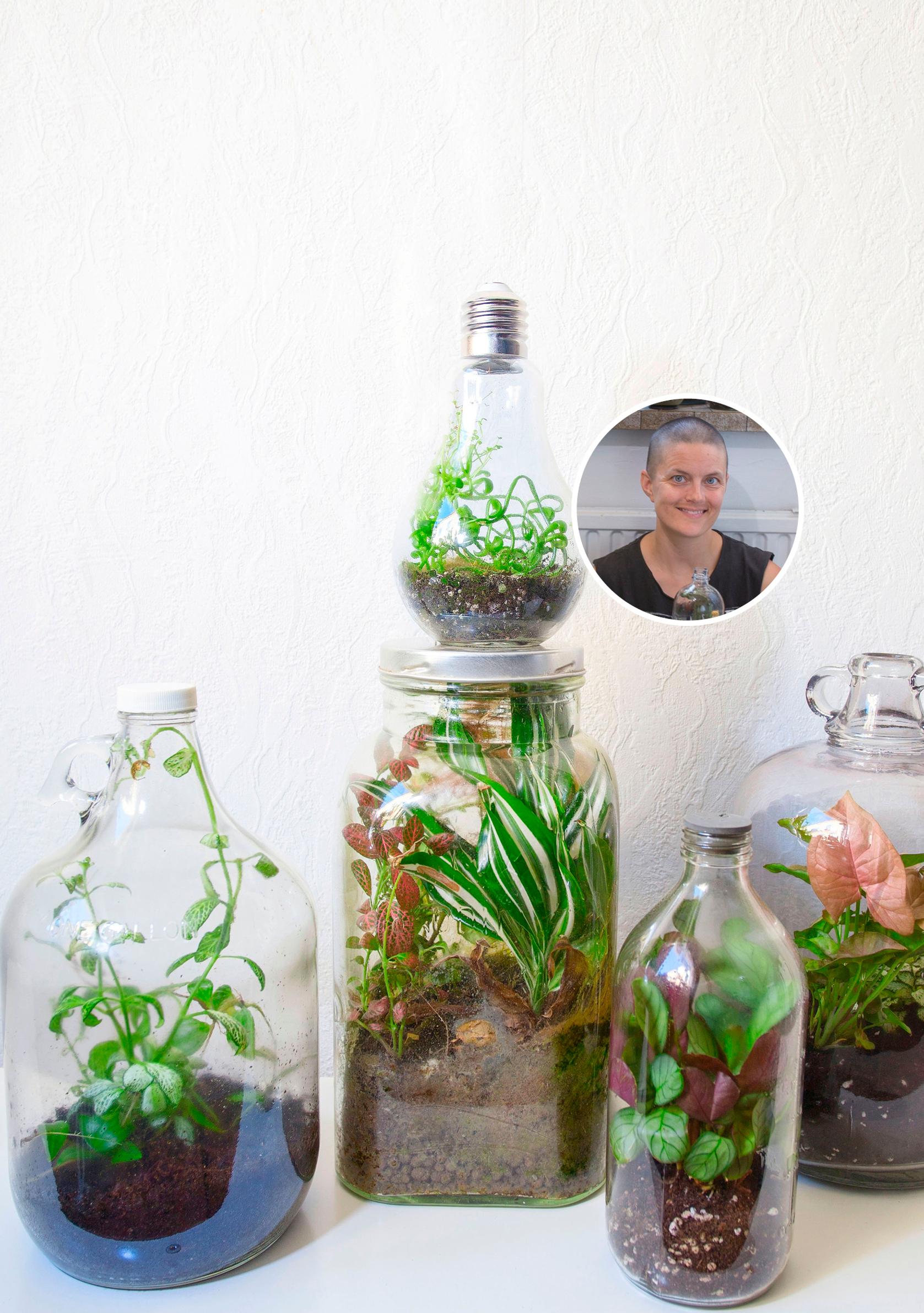
A bottle garden thrives by itself and without watering—check out the top 5 bottle plants!
Bottle plants are Kaija Papu's passion. At its simplest, houseplants planted in a bottle only need sunlight. The largest plant bottle in Kaija’s bottle garden is four years old and has never been watered.
Kaija Papu lives in a cozy home in Tampere, Finland, where art and around 150 houseplants create a relaxing atmosphere. On closer inspection, you’ll notice several more or less self-sufficient ecosystems around the home. Each is in its own glass bottle, with most of them on the bright, north-facing kitchen window.
“I can still recall a photo my friend showed me online of an elderly, smiling Englishman named David Latimer, who has grown the same plant in a large, sealed bottle since the 1960s. It seemed unbelievable.
Five years ago, I discovered a 1970s book called Kukkiva Koti (“Flowering Home”) at my childhood home, which had instructions for growing these types of bottle plants. That’s when I felt inspired to make my first plant bottle.”
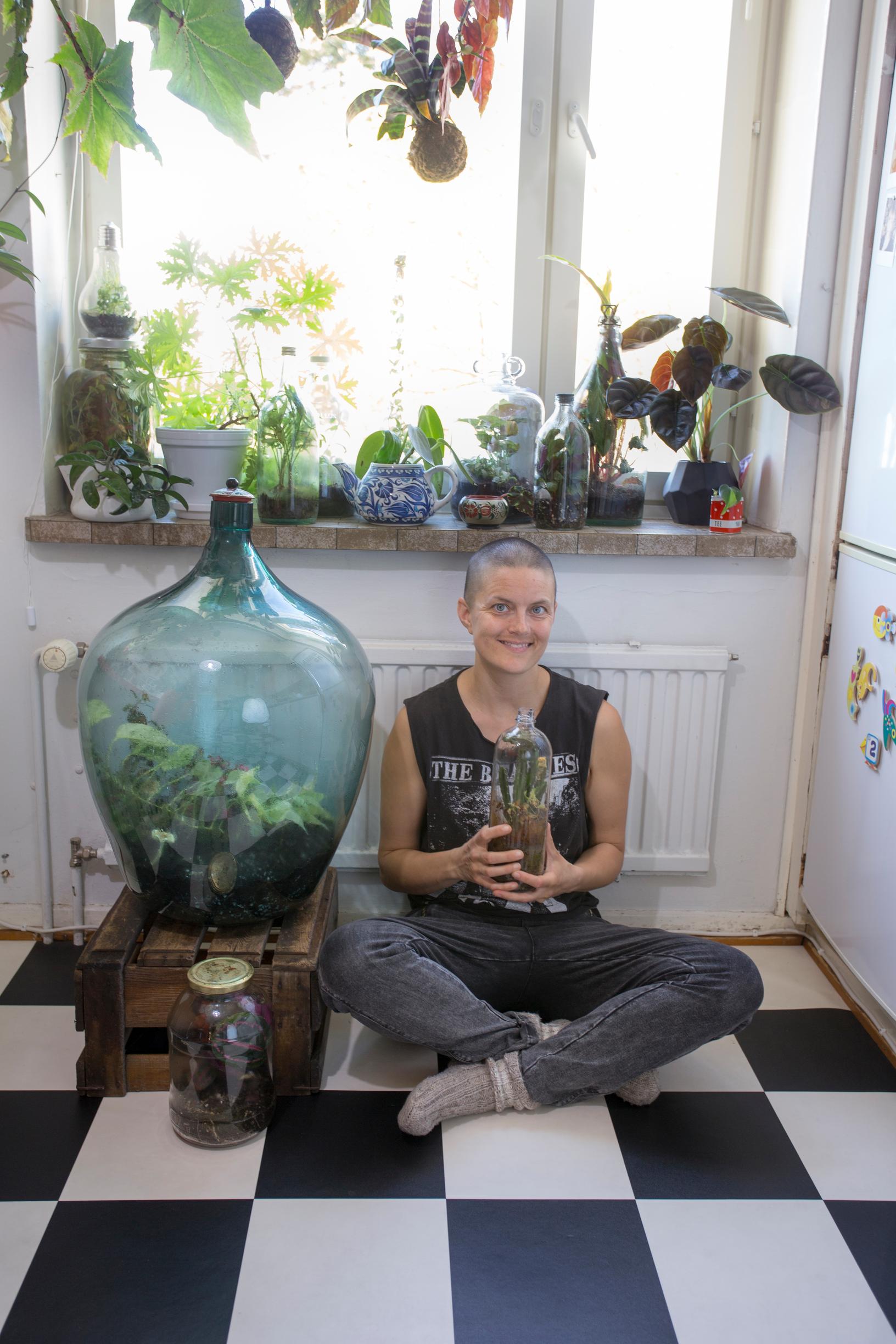
Kaija’s love for houseplants started a few years earlier. She had just returned to Finland from a long sailing trip to the Caribbean with her father.
“I spent a year in the sun, close to nature, and autumn was just beginning here. Everything outdoors felt like it was dying. I thought I couldn’t handle it if I didn’t bring some greenery into my home.”
Before long, her first bottle plant got company, as Kaija became fascinated by watching the plants sealed in bottles. If you cover the opening with a tight bottle top, it creates a self-contained world in the bottle that only needs sunlight from the outside world. In all other ways, the plant bottle is completely self-sufficient.
Thanks to photosynthesis, moisture and oxygen keep accumulating inside the bottle for the plants to use. In a closed cycle, they can also handle their own fertilization. Over time, the lowest leaves drop off, and as they decompose at the bottom, they nourish the plants.
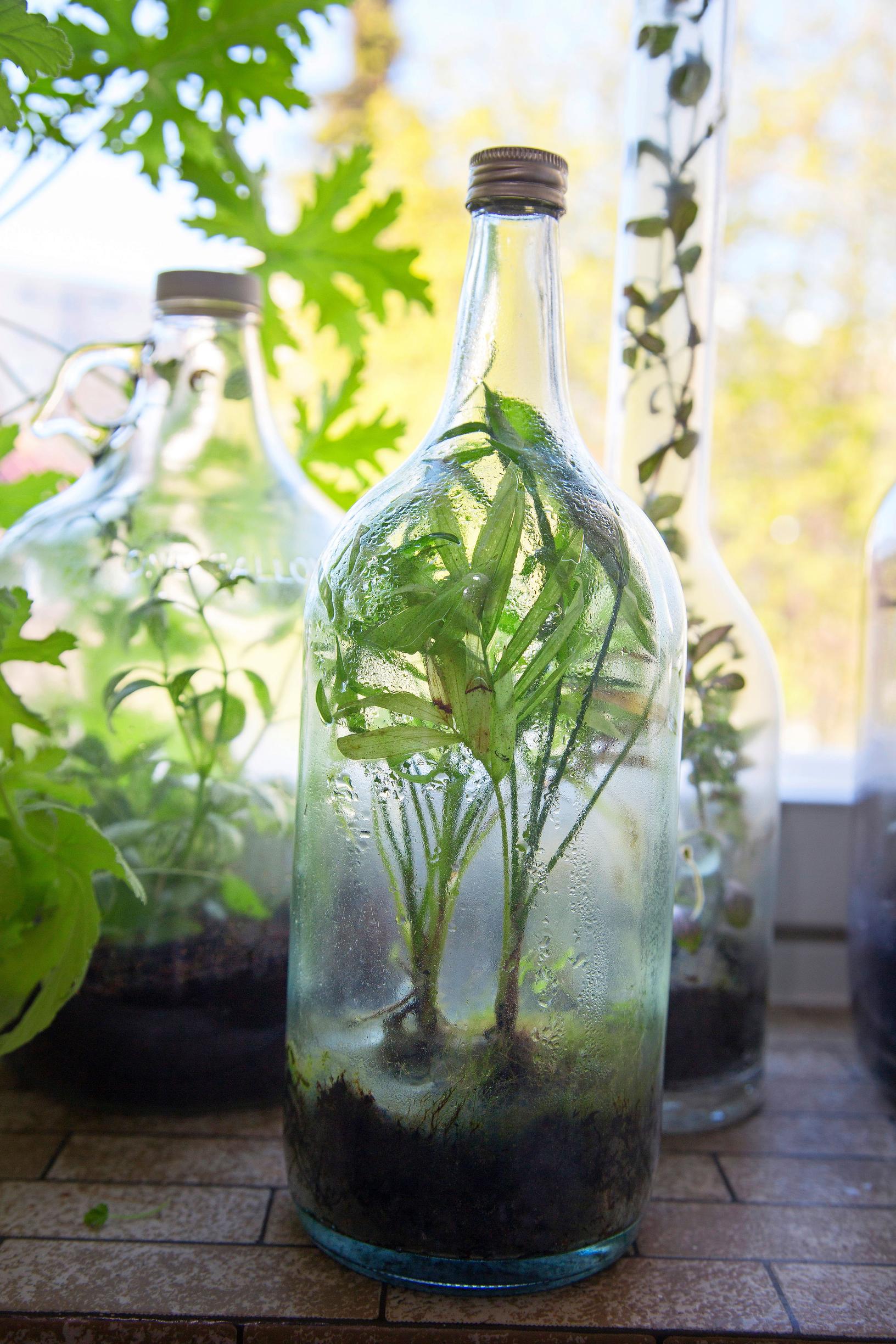
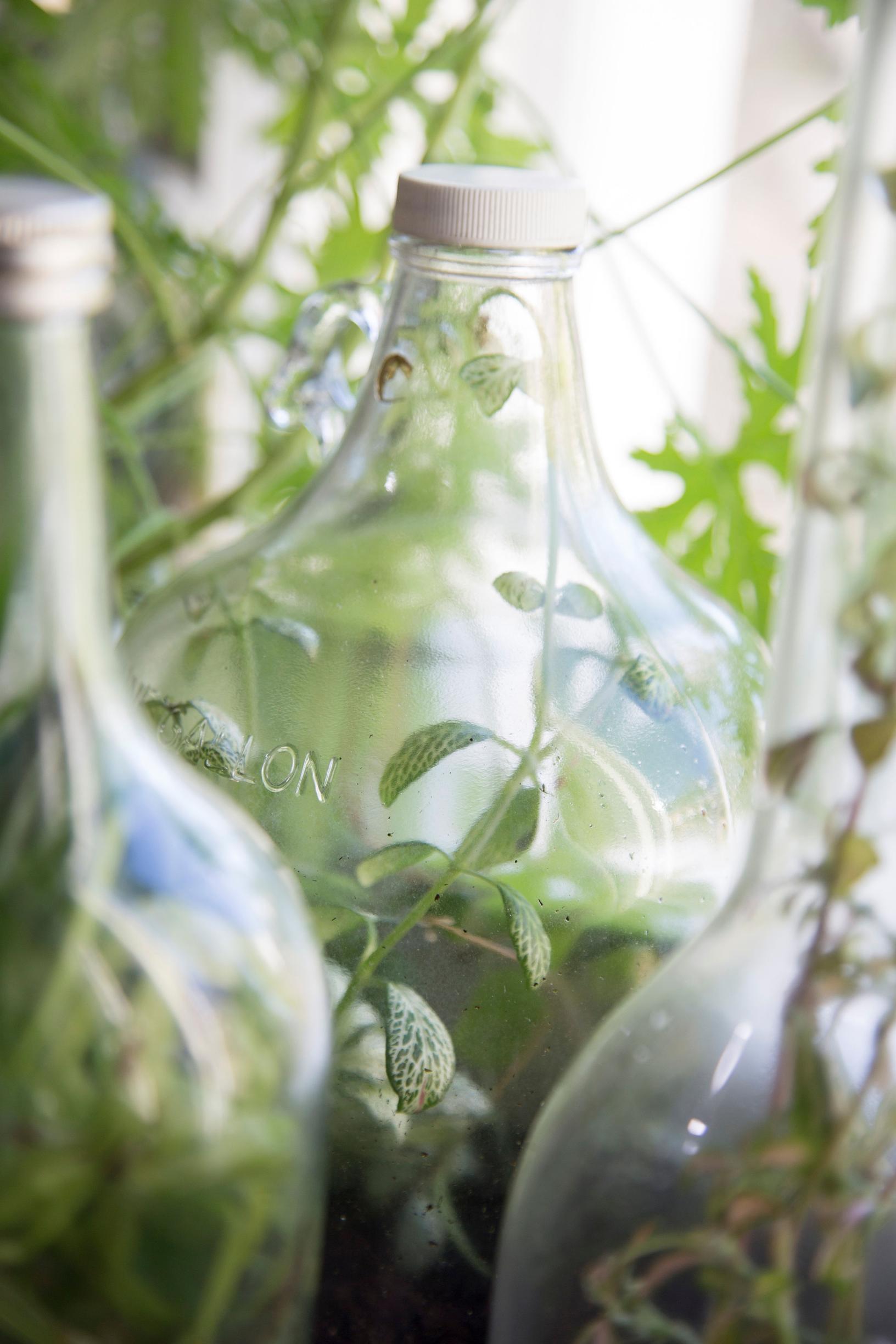
“There’s something magical about bottle plants. Something is always happening inside the glass. Once, a mother of thousands in an open bottle grew so tall that it peeked out of the opening. But soon it sank back down and kept growing inside. It was almost as if it realized the bottle was more comfortable than the outside world.”
You can indeed grow houseplants in open bottles, too. Kaija thinks bottles without a cap are actually easier to balance than sealed ones, because any excess moisture can simply evaporate.
“Bottle plants will do just fine with sparse watering.”
Caring for open bottle plants is very straightforward. They only need a small amount of water: every six months, you give them roughly three tablespoons of water or three sprays with a spray bottle.
Such a modest amount might seem shocking to a typical houseplant owner, but in Kaija’s experience, overwatering is the main reason why both sealed and open bottle plants start to struggle.
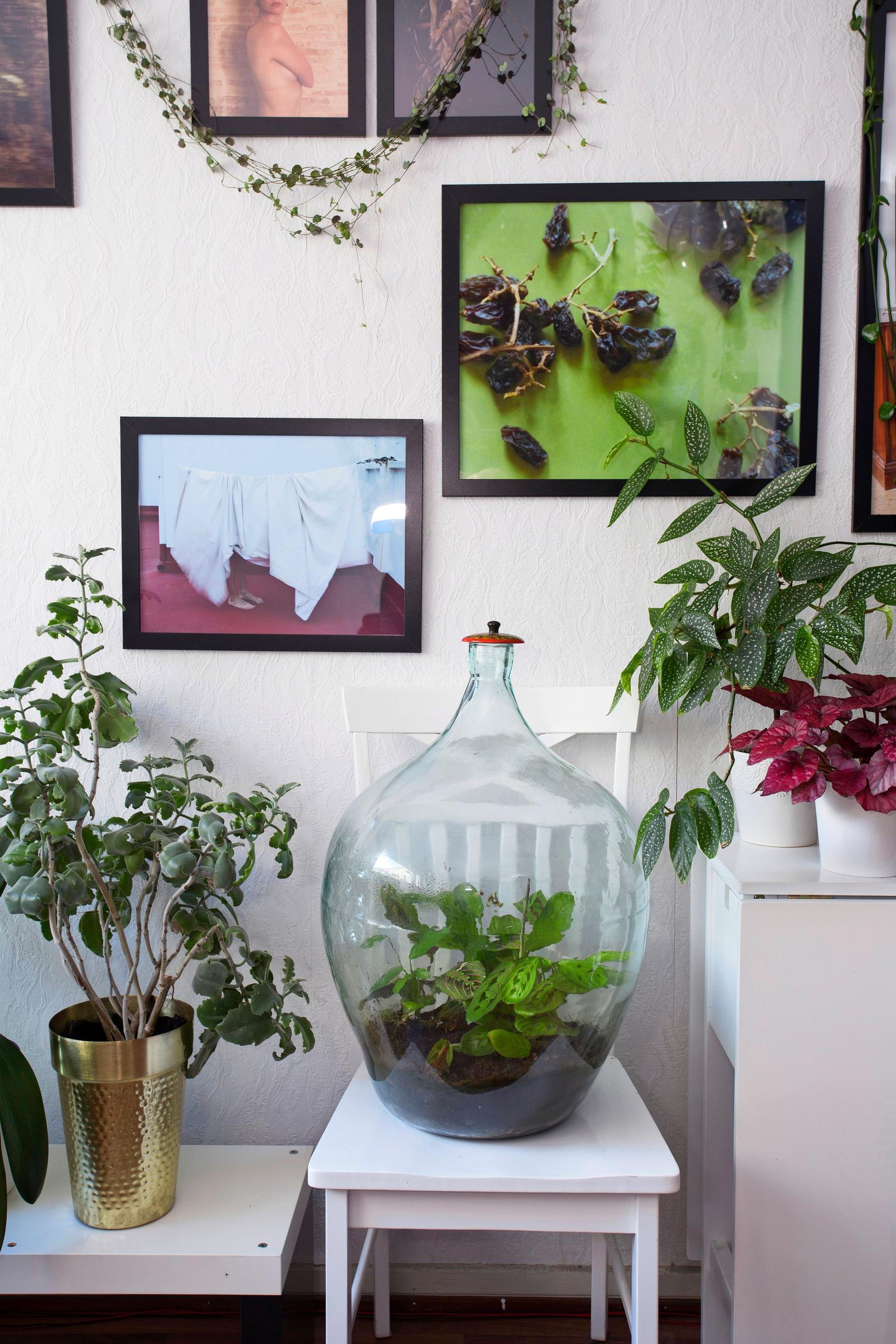
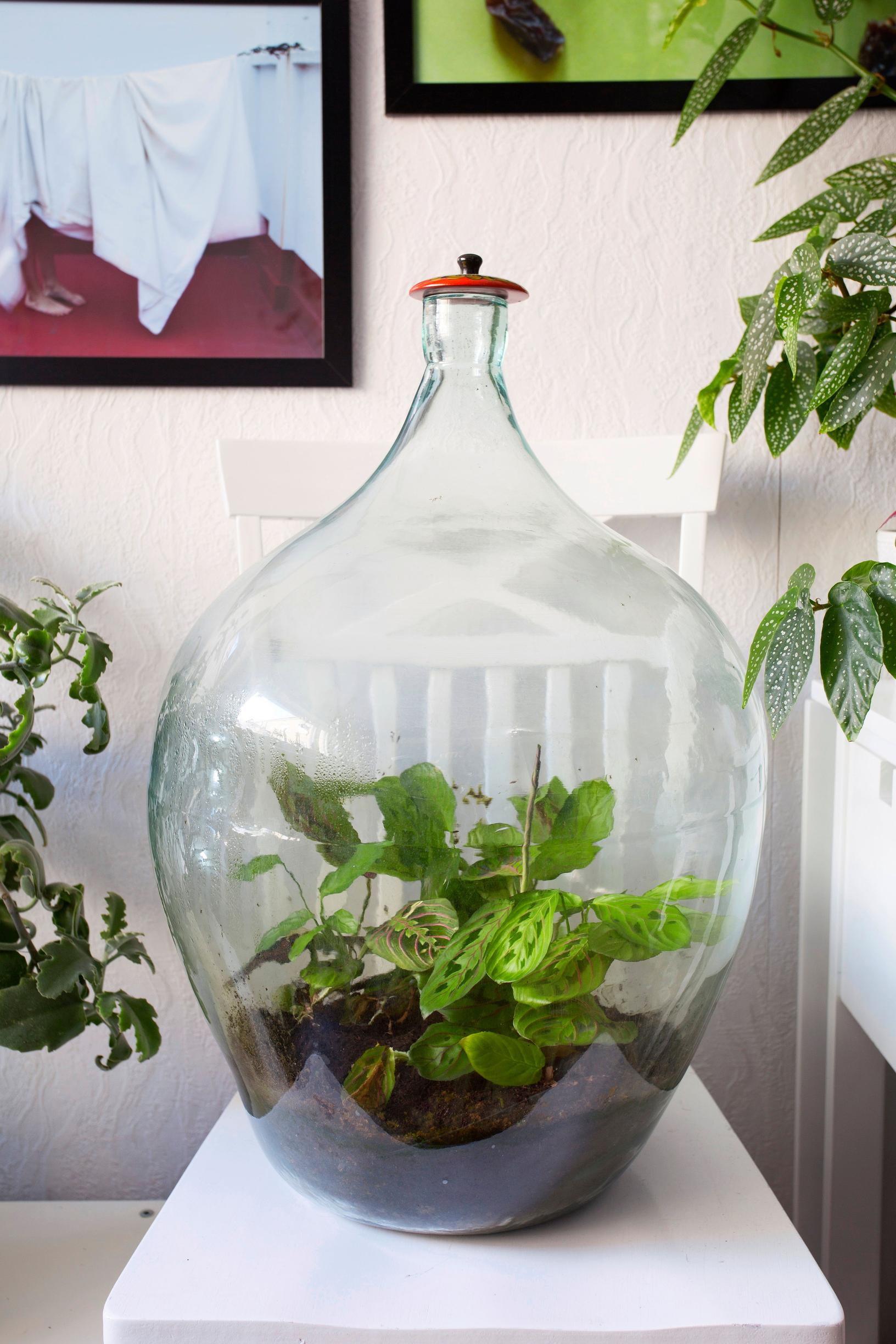
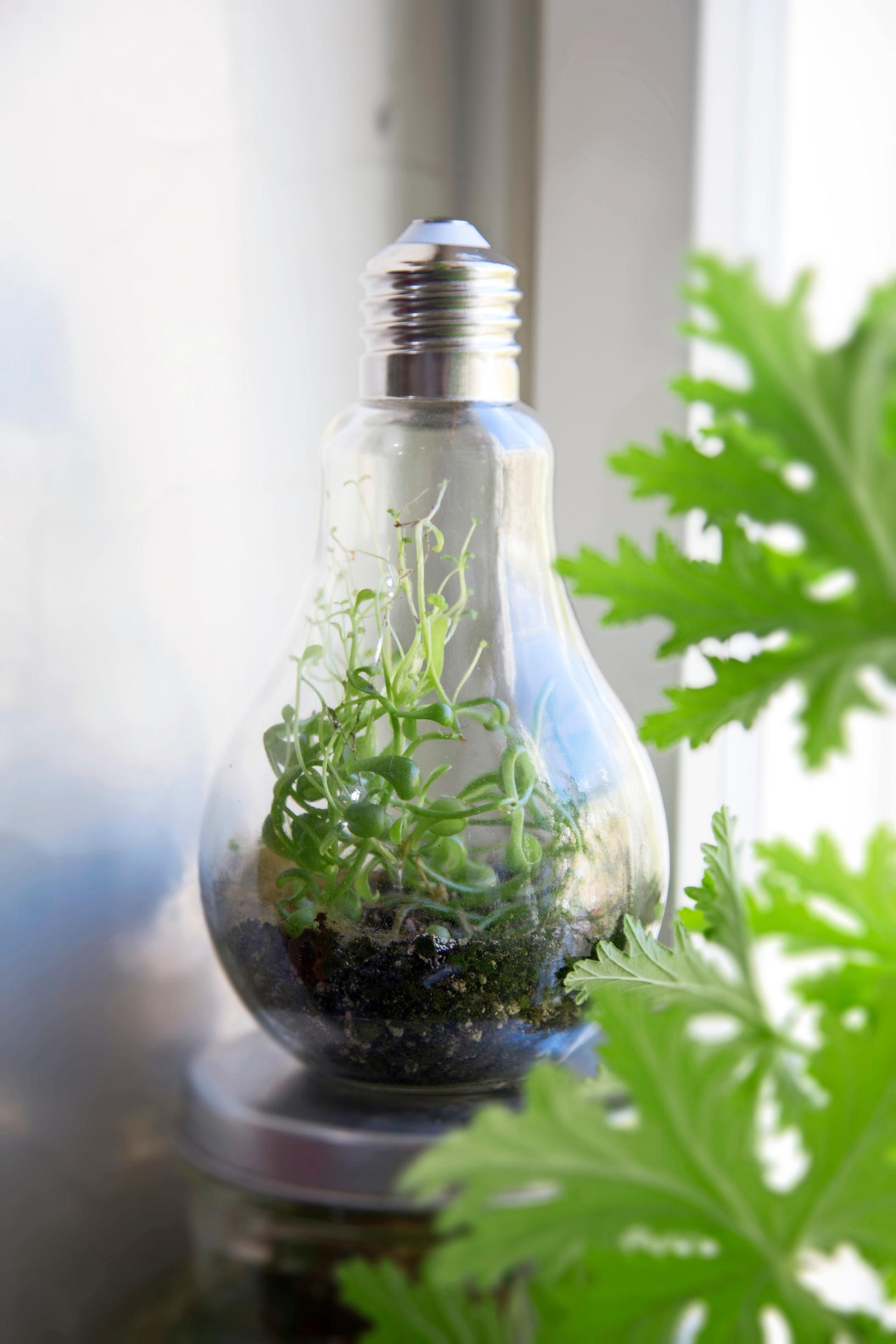
Kaija thinks the initial setup phase of plant bottles requires a bit of patient tinkering, but after that, a bottle garden is very low-maintenance.
She believes a pre-planted bottle makes a great gift for someone who struggles with keeping ordinary potted houseplants alive. Once a plant in a sealed bottle has become stable, it can thrive until it runs out of space.
Bottle garden plants: 5 perfect picks
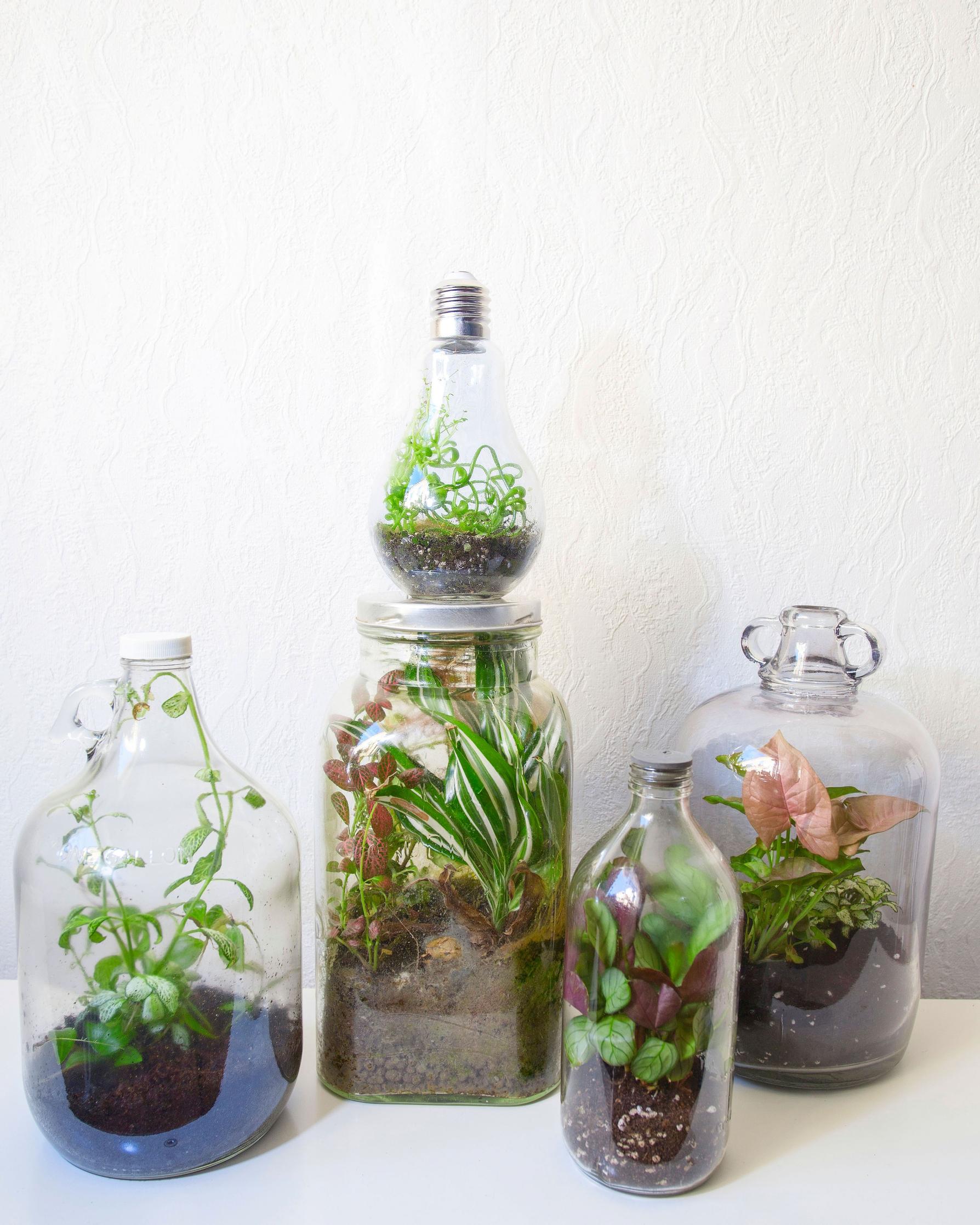
1. Nerve plant, Fittonia verschaffeltii
In Kaija’s opinion, nerve plants are perfect for a bottle because they’re small, have lovely leaves, and enjoy consistent moisture.
2. Mother of thousands, Kalanchoe daigremontiana
Mother of thousands produces tiny plantlets along the edges of its leaves, which drop into the soil. Kaija put one of these little sprouts into a lightbulb bottle.
3. Nerve plant and spider plant, Fittonia verschaffeltii and Chlorophytum
The spider plant, here growing with a nerve plant, is highly adaptable, so it also thrives effortlessly in a bottle.
4. Never-never plant, Ctenanthe ’Amagris’
Besides never-never plants, Kaija says other members of the Maranta family, such as prayer plants and calatheas, also do exceptionally well in bottles.
5. Arrowhead plant and nerve plant, Syngonium podophyllum and Fittonia verschaffeltii
Arrowhead plants are just the right size for bottles. In Kaija’s experience, they easily attract pests, but thanks to bottle cultivation, those pests can’t spread to the rest of your houseplants.
